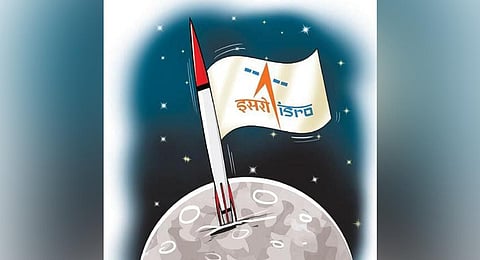

A little over 50 years after its establishment, the Indian Space Research Organisation (ISRO) received well-deserved recognition. Its achievements not only united 1.4 billion people under one moon but also elevated India’s global stand in science and space exploration. India’s name resonated on both Earth and in space when the Indian flag left an indelible mark on the lunar surface. From being in the moon’s shadow to facing the sun’s heat, ISRO accomplished it all in 2023.
Following an unsuccessful Chandrayaan-2 mission in 2019, redemption came on August 23, 2023, when India achieved a soft landing near the Moon’s south pole, making it the sole country to achieve it so far. The country’s lunar probe enabled it to join the elite club which comprises the USA, the erstwhile Soviet Union, and China, the only other countries to soft-land on the Moon.
However, the Chandrayaan-3 mission was not just about landing; it conducted technology demonstration experiments, including two surprises – the hop experiment of the Vikram Lander and moving the Propulsion Module from lunar orbit to Earth orbit — both indicating the return-to-Earth capabilities under development. This potentially will help India bring back samples from the Moon the next time around.
The mission’s payloads made several scientific discoveries, confirming the presence of sulphur on the lunar surface and generating the first temperature-depth profile of the lunar south polar region. Chasing the sun was a longer process, but confident in its pursuit, ISRO’s Aditya-L1 became the first Indian space-based observatory to study the Sun from a halo orbit around the first Sun-Earth Lagrangian point (L1), located roughly 1.5 million km from Earth. According to recent reports, the space agency successfully placed Aditya-L1 in the L1 point.
Other achievements of the space agency included ongoing tests for the Ganganyaan Mission, which aims to demonstrate human spaceflight capability by launching a crew of three members into an orbit of 400 km altitude in a 3-day mission and bringing them safely back to Earth by landing in the ocean. In 2023, India also joined the ambitious Artemis Accords led by the US, aiding in sharing data, findings, and resources for the Moon mission.
In private space, ISRO began on a positive note by launching 36 satellites for the OneWeb constellation. The space agency also assisted Agnikul Cosmos in opening the first private launch facility inside its compound and supported a robust new space policy to help solve issues using space tech in various sectors. Meanwhile, India’s highest-funded space tech startup, Skyroot Aerospace, is working to develop an orbital-class rocket. The autonomous landing test of the Reusable Launch Vehicle prototype (RLV-TD) marked another significant milestone toward sustainable space travel.
In the coming years, as India turns a corner in space exploration, ISRO braces to face the challenges of the country’s ambitious plan to set up a Bhartiya Antriksha Station by 2035 and send an Indian to the moon by 2040, along with executing multiple space-bound flights in 2024.
HISTORIC MOMENTS
Prayaan rover travels a distance to click a photo of the Vikram lander on the lunar surface. Meanwhile, the Vikram lander clicks the imprints of the rover taking a ‘moonwalk.’
Solar Ultraviolet Imaging Telescope (SUIT) onboard the Aditya-L1 captures mesmerising never seen full-disk images of the Sun in wavelengths ranging from 200 to 400nm.